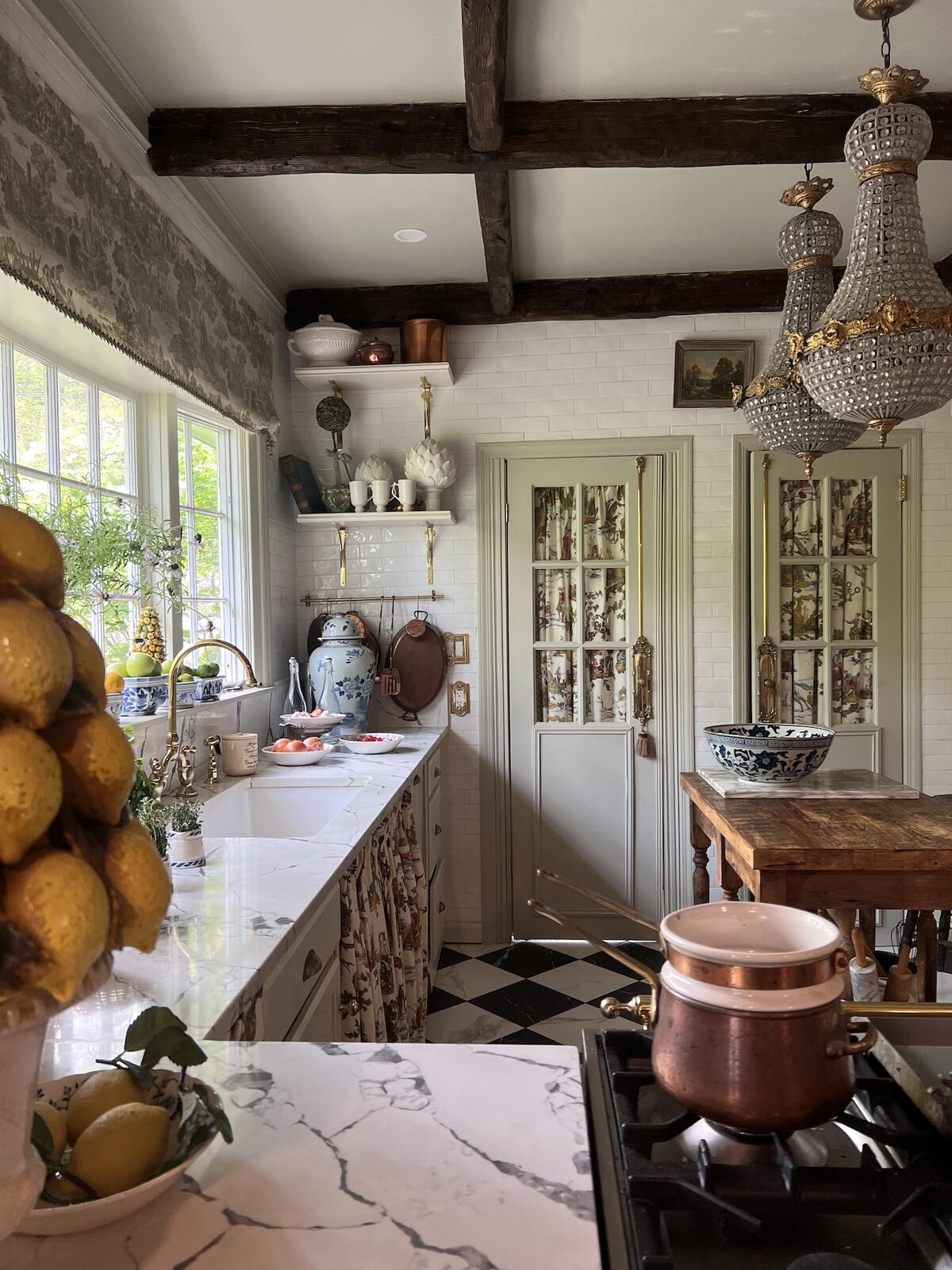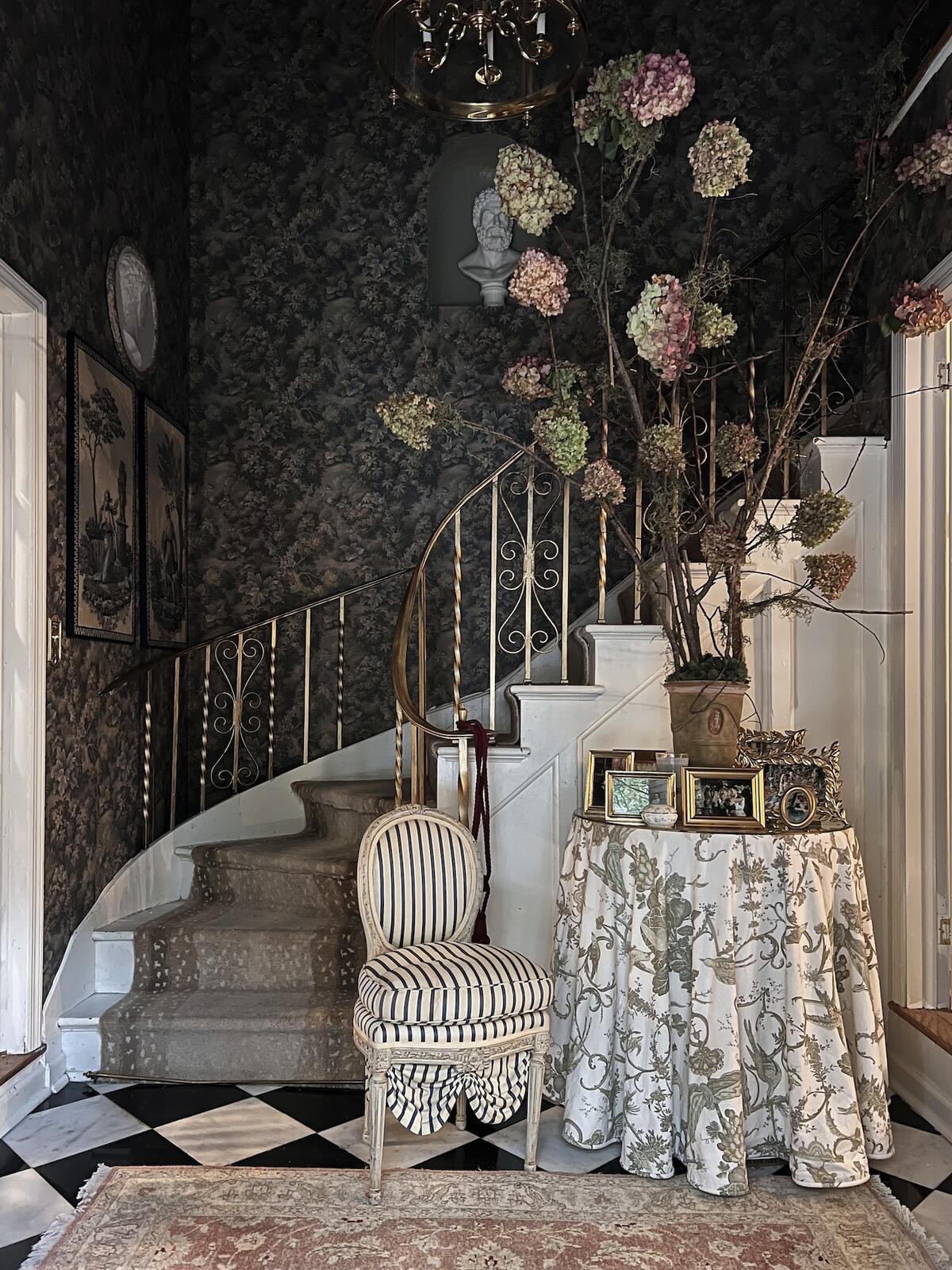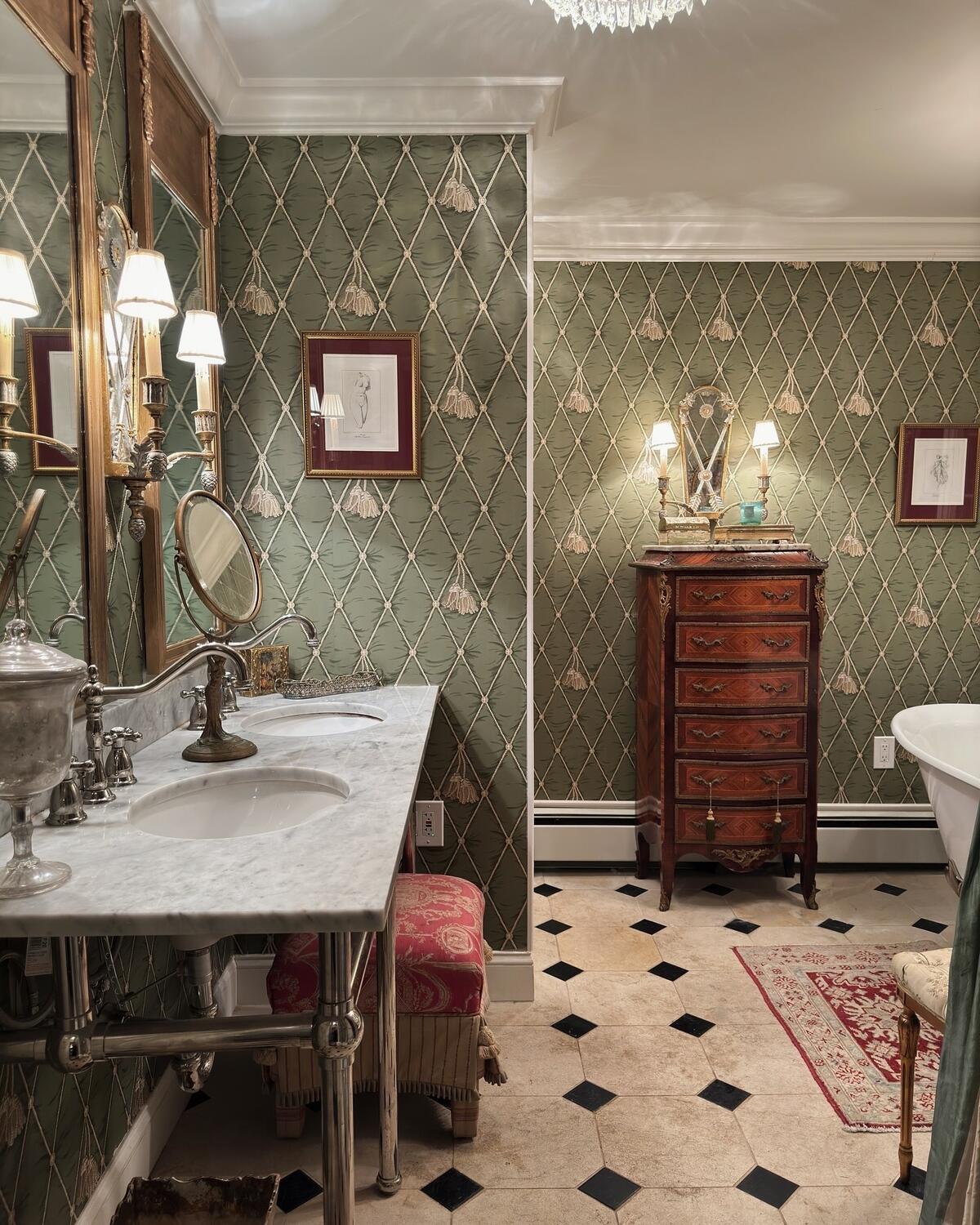In Ask an Influencer, Business of Home explores the creator economy. This week, we spoke with interior designer Paige Kontrafouris.
On social media, Paige Kontrafouris is known for interiors that look like they were transported straight out of a French chateau, complete with opulent gilded mirrors, marble busts and sparkling chandeliers. Her open secret, and the detail that tends to keep followers coming back: 99 percent of the furnishings are sourced secondhand, and the vast majority come from Facebook Marketplace.

“When we first moved into our house [six years ago], my husband and I had both moved from living with our families, so we had absolutely no furniture besides using our wedding gift money to buy a bed and a mattress,” says Kontrafouris. “I was like, ‘We need to furnish an entire house. How are we going to afford this?’”
The creative was no stranger to garage sales, but the all-hours, constantly replenished secondhand marketplaces on sites like Facebook, eBay and Craigslist turned out to be much deeper resource wells than she expected. Plus, she had a leg up on the other online treasure hunters: She had not only grown up in the home world—thanks to her father, the owner of a landscape design and construction company—but had forged her own path in the industry, earning her design degree and working for several years for a commercially focused firm. When it came to design, she knew exactly what she was looking for.
Rightfully assuming that her online shopping would resonate with an online audience, Kontrafouris began posting tips on Instagram and TikTok, growing a modest following as she documented the process of being a first-time homeowner in her late 20s. When the pandemic hit, that audience exploded—and so did her business. The humble online shopping hub turned into a sprawling e-design enterprise with clients across the country.
Today, that audience has grown to 226,000 followers on Instagram and 61,000 on TikTok. Ahead, the entrepreneur shares how she crafted her design services for online clients, discovered the missing element to unlock better engagement, and unearthed a content strategy that draws in her ideal followers.
Stepping Out From Behind the Camera
In the early days of Kontrafouris’s social media success, her feed was full of stories of treasures found online, design schemes coming together, and the excitement of crafting a dream space on a shoestring budget. But one crucial element remained missing.

“For the first few years, if you looked at my page, you would have no idea who was behind the screen,” she says. “I just never posted myself.”
It’s a problem she has also seen among others in the social media design community. “A lot of times, even the bigger interior designers that I follow, when you look at their page, all of it is home photos, before-and-afters and photos of their project,” she says. “The issue is that people don’t know who that person is.”
The longer she spent on social media, the more she realized that keeping herself hidden was keeping her audience at arm’s length. “When I started posting more of myself, or behind-the-scenes content of silly little things we were doing in our house, or things I was doing with my family, people could connect with me better,” she says. “Of course, that makes [it easier for] people to engage with you—it gives somebody something to connect with and start a conversation on. I’ve actually made great friendships out of social media just by posting organically and connecting with followers.”
Finding Your Online Niche
When Kontrafouris first started posting about her adventures in secondhand shopping five years ago, Facebook Marketplace wasn’t quite the online thrifting mecca it has since become. She could tell that the site had potential as a sourcing destination, but you had to work for it. “I started seeing how the platform works and how intuitive it was, but also the legwork you had to put in [on] the back end—it works by keyword searches, so you have to be more specific with what you’re searching for and know how to work the algorithm,” she says. “It really just opened up this whole new world of sourcing, but as crazy as it is, there is a method to the madness of finding the good stuff on there.”
During the pandemic, Marketplace really took off, and Kontrafouris realized she had a multipronged advantage: She had not only mastered the site’s search features, but she had the design knowledge to zero in on the best quality items and situate them perfectly in a space. Plus, she had already ironed out the tricky logistics involved in having furnishings and decor shipped across the country from the platform’s far-flung sellers.
“It’s not hard, but there is a method to it, and there’s a lot of research that went into figuring out how it works, and continuous research to figure out how and when [the site] changes things and adds new features,” she says. “That’s how the Facebook Marketplace aspect of the videos I share was born, but also the [introduction of services like] my search term guide, the one-on-one coaching—and it really is a great way to furnish your home on a budget.”
She has since spun the niche into a variety of online offerings that have contributed to the growth of her business. Some are social media based—a monthly Instagram subscription with tips for shopping secondhand online, one-on-one Facebook Marketplace coaching, and an e-book on using the site to bring your dream home to life—while other services stick more closely to classic e-design concepts like digital room design, room audits and secondhand design concepts.

Getting Over Going Viral
Kontrafouris remembers when creating a viral video was the golden ticket to building an audience. It even happened to her, with several videos that took off and funneled fresh followers to her page. At first, it was exciting—until she realized the long-term payoff wasn’t worth chasing that 15 minutes of fame.
“It’s always the joke among friends in the content creation industry that it’s a blessing and a curse to have your viral moment,” she says. “It can give you a ton of reach or an influx of followers, but that doesn’t always mean that they are your ideal followers.”
Two years ago, she came to the realization that she no longer cared about going viral. After all, the followers who mattered most to her were seeking out resources for their own homes, and keeping them around meant cultivating a body of content that primarily featured substantial design tips, not videos that played into one-off social media trends.
“Your ideal follower—who’s actually going to engage with your content, is going to take away things from your content—is not going to be someone who saw one video that they liked because it went viral and they followed you but then don’t care about anything else that you post,” she says. “Now I just post as organically and authentically as I can, and never for growth. And I can confidently say I have a following of people who engage with my stuff, like what I post, and that I’ve developed relationships with these people. Even if they're just silly little online friendships.”





























